Traditionally, healthcare marketing relied on broad, generalized strategies that often missed the mark in addressing the unique needs of diverse patient populations and high-level healthcare professionals (HCPs). While the one-size-fits-all approach had a broad reach, it lacked the precision necessary for impactful engagement. Enter precision-based targeting, a more data-driven approach.
By leveraging advanced technologies and data analytics, healthcare marketers can now deliver more personalized, effective campaigns than ever before.
The Power of Data and Advanced Technologies
The integration of Machine Learning (ML), Artificial Intelligence (AI), and big data analytics has revolutionized healthcare marketing. These technologies enable marketers to analyze vast amounts of data to identify patterns and insights that were previously inaccessible.
Deep Dive into Precision-based Targeting
Precision-based targeting involves identifying specific patient groups and their healthcare providers (HCPs) using detailed health data and analytics. Unlike traditional methods, this approach allows for messaging that resonates on a personal level, leading to improved engagement and outcomes.
Patient Example

In a diabetes medication campaign targeting patients based on their treatment history, lifestyle factors, and digital behavior, the campaign could segment audiences into subgroups such as newly diagnosed patients, long-term patients, and those at risk of diabetes.
By analyzing data on medication adherence, lifestyle choices like diet and exercise, and online behavior such as searches related to diabetes management, the campaign can tailor messages. Newly diagnosed patients might receive educational content about managing diabetes, while long-term patients could get reminders about medication adherence and new treatment options.
Healthcare Professional Example

In a similar diabetes medication campaign, while targeting healthcare professionals, the approach shifts to emphasize clinical data, treatment efficacy, and patient management strategies. The campaign could segment HCP audiences into various groups, such as endocrinologists, primary care physicians, and diabetes specialists.
For endocrinologists and diabetes specialists, the campaign might focus on the medication’s specific benefits for complex diabetes cases, including its efficacy in lowering blood sugar levels, reducing the risk of diabetes-related complications, and its integration into multi-drug regimens. This could be complemented by providing access to detailed clinical trial data, peer-reviewed studies, and expert testimonials that underscore the medication’s effectiveness and safety profile.
Primary care physicians, who often manage the initial stages of diabetes care, might receive content tailored to the broader aspects of diabetes management. This could include information on identifying candidates for the medication, guidelines for initial dosing and adjustments, and tools for monitoring patient progress. Additionally, the campaign could offer resources such as patient education materials, which these physicians can share with their patients to help them understand their treatment plan better.
For all HCP groups, the campaign could leverage digital platforms like professional medical networks, email newsletters, and webinars to disseminate information. Interactive elements such as Q&A sessions with the drug’s clinical researchers, virtual roundtable discussions, and digital brochures detailing patient case studies can be particularly effective. These resources provide valuable information and facilitate engagement and dialogue among HCPs.
The Role of Omnichannel Strategies
In today’s digital age, patients and HCPs interact with a multitude of channels, from social media to telehealth platforms. An omnichannel strategy, which provides a seamless experience across all these platforms, is crucial for effective engagement. This approach ensures that the messaging is consistent and personalized, regardless of the channel.
Omnichannel versus Multichannel Marketing
While multichannel marketing uses multiple channels to reach an audience, omnichannel marketing creates a cohesive, integrated experience across all channels. In healthcare, this means ensuring that the journey from awareness to decision is seamless, whether they’re engaging through a mobile app, website, or in-person appointment.
The Importance of Owning Your Audience
Owning your audience in healthcare marketing means creating a unique, brand-specific data asset. This exclusive insight into your target audience allows for more precise and effective campaigns. It’s about moving beyond generic demographics to a deeper understanding of patient needs and behaviors.
How to Own Your Audience
Start by collecting and analyzing data across various touchpoints. Use surveys, patient feedback, and digital engagement metrics to build a comprehensive profile of your audience. Then, leverage this data to create targeted content and campaigns that speak directly to their needs and preferences.
Challenges and Considerations
While the benefits of precision-based targeting are clear, there are challenges, particularly around data privacy and the integration of new technologies. Healthcare marketers must navigate these challenges while adhering to regulations like HIPAA. Transparency with patients and ensuring data security are paramount.
Take Data-driven Targeting to the Next Level with Levo Health
At Levo Health, we understand the importance of staying ahead in the dynamic field of healthcare marketing. Our expertise in leveraging the latest technologies and data strategies can help your campaigns reach new heights of success. Contact us to learn how we can transform your healthcare marketing approach.
















